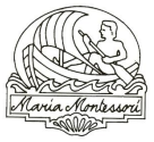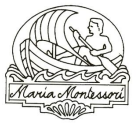Harvard Business Review: Montessori schools promote innovation and creativity
Harvard Business Review contributing editor Bronwyn Fryer asked Hal Gregersen of Insead to explain how the "Innovators' DNA" works.
Gregersen: If you look at 4-year-olds, they are constantly asking questions and wondering how things work. But by the time they are 6 and a half years old they stop asking questions because they quickly learn that teachers value the right answers more than provocative questions.
High school students rarely show inquisitiveness. And by the time they're grown up and are in corporate settings, they have already had the curiosity drummed out of them. 80% of executives spend less than 20% of their time on discovering new ideas.
Unless, of course, they work for a company like Apple or Google. We also believe that the most innovative entrepreneurs were very lucky to have been raised in an atmosphere where inquisitiveness was encouraged.
We were stuck by the stories they told about being sustained by people who cared about experimentation and exploration. Sometimes these people were relatives, but sometimes they were neighbors, teachers or other influential adults.
A number of the innovative entrepreneurs also went to Montessori schools, where they learned to follow their curiosity. To paraphrase the famous Apple ad campaign, innovators not only learned early on to think different, they act different (and even talk different).
This post is part of HarvardBusiness.org's Creativity at Work special package. How Do Innovators Think?
What makes visionary entrepreneurs such as Apple's Steve Jobs, Amazon's Jeff Bezos, Ebay's Pierre Omidyar and Meg Whitman, and P&G's A.G. Lafley tick? In a question-and-answer session with HBR contributing editor Bronwyn Fryer, Professors Jeff Dyer of Brigham Young University and Hal Gregersen of Insead explain how the "Innovators' DNA" works
Gregersen: If you look at 4-year-olds, they are constantly asking questions and wondering how things work. But by the time they are 6 and a half years old they stop asking questions because they quickly learn that teachers value the right answers more than provocative questions.
High school students rarely show inquisitiveness. And by the time they're grown up and are in corporate settings, they have already had the curiosity drummed out of them. 80% of executives spend less than 20% of their time on discovering new ideas.
Unless, of course, they work for a company like Apple or Google. We also believe that the most innovative entrepreneurs were very lucky to have been raised in an atmosphere where inquisitiveness was encouraged.
We were stuck by the stories they told about being sustained by people who cared about experimentation and exploration. Sometimes these people were relatives, but sometimes they were neighbors, teachers or other influential adults.
A number of the innovative entrepreneurs also went to Montessori schools, where they learned to follow their curiosity. To paraphrase the famous Apple ad campaign, innovators not only learned early on to think different, they act different (and even talk different).
This post is part of HarvardBusiness.org's Creativity at Work special package. How Do Innovators Think?
What makes visionary entrepreneurs such as Apple's Steve Jobs, Amazon's Jeff Bezos, Ebay's Pierre Omidyar and Meg Whitman, and P&G's A.G. Lafley tick? In a question-and-answer session with HBR contributing editor Bronwyn Fryer, Professors Jeff Dyer of Brigham Young University and Hal Gregersen of Insead explain how the "Innovators' DNA" works

